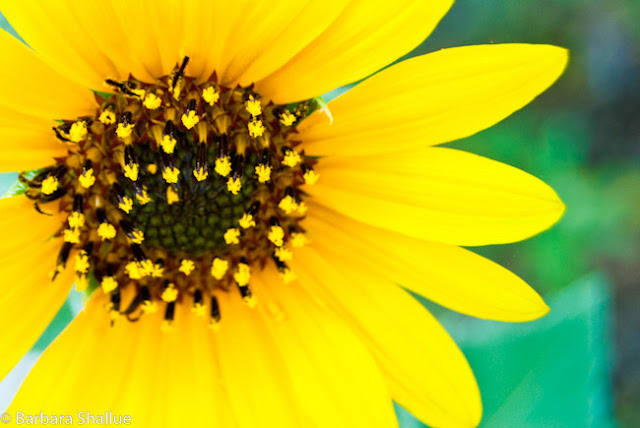A successful photo is one that evokes interest and compels the eye to linger awhile. It tells a story.
However, what we see with our eyes and what we capture with our camera are often two separate things. The problem is, our eyes see the world around us in 3-D. But photographs are two-dimensional - just one reason why they often fall short of the image we hoped to capture and share.
Photographer Edward Weston once said, "Consulting the rules of composition before taking a photograph is like consulting the laws of gravity before going for a walk." But with all due respect to Mr. Weston, if you take a few seconds to compose your shot before clicking, you'll have a better chance that others will see what caught your eye in the first place. And you'll save time in post-processing.
Composition is simply how your subject and other elements within the image frame are arranged and relate to each other. Learning how to compose a photo will not only help you tell the story, but will make it unique.
In any good story, written or photographic, you need focus, tension, interest, depth, contrast. Elements that distract should be removed. Here are just a few ways to achieve those elements in your photograph, whether you shoot in automatic mode or manual...just remember there are always exceptions to any rule!
Focus
The Rule of Thirds
The Rule of Thirds is probably the most common composition tool used. Imagine a Tic-Tac-Toe board placed on top of your image, dividing it into 9 equal sections. Now align the main elements of your photo along those lines, especially where they intersect, and poof! your photo is already more interesting because, according to scientists, the human eye is naturally drawn to a point 2/3 up a page.
This is very useful in landscapes or seascapes. Adjust the horizon, depending on whether the sky is more important or the land/sea.
Fill the Frame
Try not to leave a lot of empty space. Your goal is to emphasize the subject and empty space is usually not empty, but full of distractions. (But if the setting is important, include enough to give a sense of place, proportion, or perspective.)
Subject Moves into the Frame
Make sure your subject is moving into or looking across the photo, not on the edge moving or looking out. You want to draw the eye into the photo, not away.
Perspective
Try different angles. Walk around. Get down low or up high for interest and surprises. For pets or babies on the floor, try getting down on their level. Remember that your camera can take photos even if you're not looking through the viewfinder, so drop it down way low and snap a few.
Check the Background
Make sure there aren't branches or poles coming out of someone's head. Keep it simple - remove what doesn't add to or support the main subject. You can usually do this by changing angles.
Check the Background
Make sure there aren't branches or poles coming out of someone's head. Keep it simple - remove what doesn't add to or support the main subject. You can usually do this by changing angles.
Framing and Lines
Windows, doors, even leaves or tree branches will lead a viewer's eye to the subject, as will lines you find in roads and fences... or lifeguard shacks.
Depth
Because photographs are two-dimensional, it's up to us to convey the depth in a photo. You can do this by including objects in the foreground and background.
But...
Depth
Because photographs are two-dimensional, it's up to us to convey the depth in a photo. You can do this by including objects in the foreground and background.
But...
Be ready to toss the rules, though, because they aren't really rules, just suggestions. Every photo tells its own story.
Art is about creativity, and with digital cameras, it's so easy to try something new. If it doesn't work, hit delete and try again.
Art is about creativity, and with digital cameras, it's so easy to try something new. If it doesn't work, hit delete and try again.
To learn more about composition, look at examples of photography you like. Examine them and figure out what appeals to you.
But most of all, grab your camera and start clicking!
But most of all, grab your camera and start clicking!










nicely done, barbara. you hit the highlights without going too technical, showed great examples, and wonderful photography skills and passion. :)
ReplyDeleteWonderful tips. I tend not to think about the rules, but just take a photo as I see it!
ReplyDeleteBarbara,
ReplyDeleteYou just get better and better each time I visit you! Thanks for the good tips!
great shots. love the 2 little girls on the beach.
ReplyDeleteLike T said, I love that you didn't get all technical, but said it in a way that anyone can understand.
ReplyDeleteI'm so thrilled with digital photography and the ability to delete, rather than pay for developing the failures, since I still have many.
these are great, Barbara!
ReplyDeleteI love the tips....very helpful.
your work is altogether beautiful, always.
-Jennifer
In a nutshell you have just described good photography. Thank you! It's still elusive, though! I love the horse. And I love the little white snail too. They're all great shots. Awesome.
ReplyDeleteall so true .. especially the last 'forget all the rules'
ReplyDeleteThese are great tips and your photographs emphasized each one perfectly! The shot of that horse is one of my all-time favorites of yours. :)
ReplyDeletetotally impressed! :-)
ReplyDeleteThese are some terrific photos Barbara. So beautiful! I don't know which is my favorite! Excellent!
ReplyDeletexo Catherine